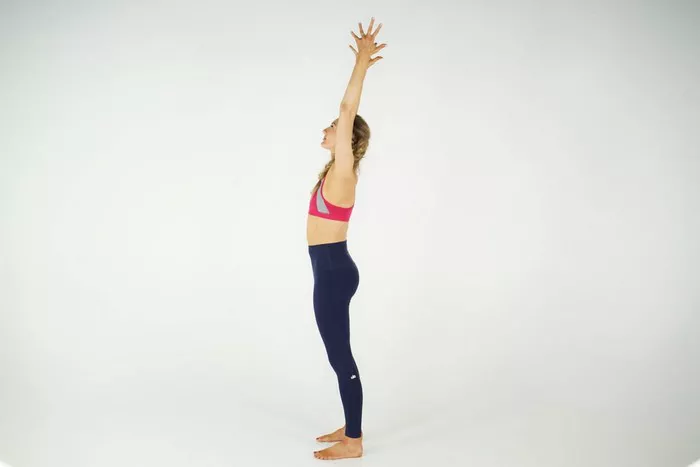Yoga is an ancient practice that integrates physical postures, breath control, and mindfulness to promote overall well-being. Among the vast array of asanas (poses), Natarajasana, also known as Lord of the Dance Pose, is a powerful and graceful posture that embodies strength, flexibility, and balance. This standing backbend requires a combination of concentration, stability, and mobility, making it a rewarding yet challenging pose for practitioners.
In this article, we will explore the numerous benefits of Natarajasana, including its impact on physical health, mental clarity, and emotional well-being. Whether you are a beginner or an advanced yogi, understanding the advantages of this pose can help you deepen your practice and harness its full potential.
Understanding Natarajasana
Natarajasana is named after Lord Nataraja, a form of Shiva, who is often depicted as the cosmic dancer in Hindu mythology. The pose represents grace, balance, and transformation, reflecting the dance of creation and destruction.
How to Perform Natarajasana
To practice Natarajasana correctly, follow these steps:
- Start in Tadasana (Mountain Pose) – Stand tall with feet together, grounding evenly through both feet.
- Shift Weight to One Leg – Engage your core and shift your weight onto your left foot.
- Bend the Right Knee – Bring your right heel toward your buttocks and grasp your right ankle or foot with your right hand.
- Extend the Left Arm Forward – Reach your left arm straight ahead, parallel to the ground, for balance.
- Lift and Stretch the Right Leg – Kick your right foot back and upward, lifting your chest while deepening the backbend.
- Hold and Breathe – Maintain balance for several breaths, then release and repeat on the other side.
This pose requires patience and practice but offers immense rewards for those who master it.
Physical Benefits of Natarajasana
Enhances Balance and Coordination
One of the primary benefits of Natarajasana is improved balance. This pose challenges the body’s stability by requiring control over one leg while lifting the other. Practicing regularly helps develop better neuromuscular coordination, which is beneficial for everyday activities such as walking, running, and standing for extended periods.
Improves Flexibility
Natarajasana stretches multiple muscle groups, including the quadriceps, hip flexors, shoulders, and spine. It opens up the chest and shoulders, which counteracts the effects of poor posture from prolonged sitting. By deepening the stretch over time, practitioners gain greater flexibility in the spine and legs, leading to enhanced mobility.
Strengthens the Legs and Core
To maintain stability in this pose, the standing leg must remain strong and engaged. This helps in strengthening the calves, thighs, and ankles. Additionally, the core muscles play a crucial role in maintaining balance, leading to a stronger abdominal region. Over time, regular practice contributes to better posture, stability, and endurance.
Boosts Spinal Health
Natarajasana involves a deep backbend, which strengthens and lengthens the spine. This helps in reducing stiffness and enhancing spinal mobility. It can be particularly beneficial for individuals suffering from lower back pain or those looking to improve their spinal flexibility.
Stimulates the Digestive System
The gentle compression of the abdomen in Natarajasana stimulates digestion by massaging the digestive organs. This may help in relieving constipation, bloating, and improving gut health.
Enhances Cardiovascular Endurance
Since this pose requires sustained focus, strength, and controlled breathing, it encourages the heart to work efficiently, thereby improving cardiovascular endurance. Over time, regular practice can contribute to better circulation and heart health.
Mental and Emotional Benefits of Natarajasana
Reduces Stress and Anxiety
Yoga, in general, is known for its calming effects on the mind, and Natarajasana is no exception. The deep breathing required to maintain balance helps in activating the parasympathetic nervous system, which reduces stress and promotes relaxation. Practicing this pose regularly can lead to a calmer, more centered mind.
Enhances Concentration and Focus
Balancing postures like Natarajasana demand intense mental focus. To hold the pose, one must remain fully present and engaged, improving concentration and mindfulness. This heightened focus translates to better productivity and mental clarity in daily life.
Promotes Emotional Stability
Since this pose represents grace and flow, it encourages practitioners to embrace challenges with ease. By learning to balance physically, individuals develop emotional resilience, helping them stay composed in stressful situations.
Builds Self-Confidence
Mastering a challenging pose like Natarajasana fosters a sense of achievement and self-confidence. The ability to balance gracefully enhances one’s self-esteem, encouraging a positive outlook toward personal growth.
Energetic and Spiritual Benefits of Natarajasana
Activates the Heart Chakra (Anahata)
Natarajasana is a powerful heart-opening pose that stimulates the Anahata Chakra (Heart Chakra). Opening this energy center promotes love, compassion, and emotional healing, allowing practitioners to develop a more open and loving attitude toward themselves and others.
Enhances Inner Awareness
The practice of Natarajasana encourages a deep connection between body and mind. By focusing on breath, alignment, and movement, practitioners cultivate greater self-awareness and mindfulness, which enhances spiritual well-being.
Fosters a Sense of Grace and Flow
Since this pose is named after Lord Shiva, the cosmic dancer, it symbolizes fluidity and transformation. Practicing Natarajasana helps individuals embrace life’s changes with grace, teaching the art of letting go and moving forward.
Precautions and Contraindications
While Natarajasana is highly beneficial, it is essential to practice it with proper alignment and awareness. Here are some precautions:
- Avoid if you have severe back, knee, or shoulder injuries.
- Use a wall or yoga strap for support if you struggle with balance.
- Warm up properly before attempting deep backbends.
- Breathe deeply and do not force the stretch to prevent strain.
If you have any medical conditions, consult a yoga instructor or healthcare professional before attempting the pose.
Conclusion
Natarajasana is more than just a yoga pose—it is a symbol of strength, balance, and transformation. By incorporating this graceful backbend into your practice, you can experience a holistic range of benefits, including improved physical strength, mental focus, emotional stability, and spiritual awareness.
Whether you are a beginner or an advanced yogi, regular practice of Natarajasana can enhance your yoga journey and overall well-being. Approach this pose with patience, mindfulness, and dedication, and enjoy the profound rewards it brings to your body, mind, and soul.
Would you like guidance on modifications or variations of Natarajasana? Let me know how I can support your yoga practice!
Related Topics:

























